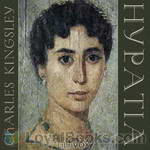|
Books Should Be Free Loyal Books Free Public Domain Audiobooks & eBook Downloads |
|
|
Books Should Be Free Loyal Books Free Public Domain Audiobooks & eBook Downloads |
|
Historical Fiction |
|---|
|
Book type:
Sort by:
View by:
|
By: Austin Bishop | |
|---|---|
 Tom of the Raiders
Tom of the Raiders
Young Adult historical fiction of a young man joining the Union Army and taking part in the Great Locomotive Chase. | |
By: Baroness Emma Orczy (1865-1947) | |
|---|---|
 Pimpernel and Rosemary
Pimpernel and Rosemary
A novel in the Scarlet Pimpernel series that features Peter Blakeney, a descendant of the Scarlet Pimpernel. Peter's adventures take him to Hungary and much intrigue involving his good friend, Rosemary, Nazis, and spies ensue. - Summary by Holly Rushik | |
 Beau Brocade
Beau Brocade
Beau Brocade is a historical fiction set in England in the early 1700's. The hero Beau is a wanted highwayman, who takes from the rich to help the poor. - Summary by Deon Gines | |
 Leatherface: A Tale of Old Flanders
Leatherface: A Tale of Old Flanders
A romantic, political adventure story set in the late 1500's, during the Spanish rule over the Netherlands, in the city of Ghent. Leatherface is an Orangist and emerges to lead the Ghent citizens to rebel and win back their freedom. | |
By: Baroness Emmuska Orczy (1865-1947) | |
|---|---|
 El Dorado
El Dorado
If you've read and loved the exciting classic The Scarlet Pimpernel then you'd probably be delighted to follow the further adventures of the dashing Sir Percy Blakeney. El Dorado by Baronness “Emmuska” Orczy depicts the intrepid swordsman and escape artist in the role of savior of the French royal family. Published in 1913, El Dorado was the fourth in the Pimpernel series of eleven books, numerous short stories and other related writings about her famous British adventurer. However, Orczy did not always follow a strict chronological sequence while publishing the novels and hence, there is plenty of overlap between the time frames of the stories... | |
 The Elusive Pimpernel
The Elusive Pimpernel
First Published in 1908, The Elusive Pimpernel by Baroness Orczy is the 4th book in the classic adventure series about the Scarlet Pimpernel. | |
 The Emperor's Candlesticks
The Emperor's Candlesticks
When a group of Russian anarchists kidnap a Russian prince in Vienna there are repercussions. On learning that the Cardinal d'Orsay has agreed to convey some hollow candlesticks from the Emperor to the Princess Marionoff in St Petersburg, two spies both see the possibility of using them to convey messages safely into Russia. One is an eager young idealist involved in the plot against the prince, the other is Madame Demidoff, a beautiful agent of the Tsar. When the candlesticks go missing at the border, the two engage in a race to get them back, both realizing that their very lives could depend on the retrieval. | |
By: Baroness Orczy (1865-1947) | |
|---|---|
 I Will Repay
I Will Repay
This is a sequel novel to the Scarlet Pimpernel. The second Pimpernel book written by Orczy, it comes (chronologically) third in the series and should be read after Sir Percy Leads the Band and before The Elusive Pimpernel. | |
 Laughing Cavalier; Ancestor of the Scarlet Pimpernel
Laughing Cavalier; Ancestor of the Scarlet Pimpernel
The enigmatic smile of The Laughing Cavalier of Franz Hals' famous painting invites you to wonder just what mischievousness hides behind that face. In this novel, inspired by the painting, Baroness Orczy recounts the adventures of an ancestor of her famous character, the Scarlet Pimpernel. Set in Holland during the turbulent times of 1623/1624, this is the story of a swashbuckling romanticist, whose desire for wealth and success always seems to be eclipsed by his sense of what is right and gentlemanly... | |
By: Basil King (1859-1928) | |
|---|---|
 Wild Olive
Wild Olive
Norrie Ford, having been unfairly convicted of murder, has escaped. A lucky chance finds him being rescued by a mysterious girl (the Wild Olive of the title), who sets him up with a new life under a new name in Argentina. He makes such a success of his time there that he is posted back to New York by the company he works for – but not before he has become engaged to be married. Back in New York, he meets up again with the Wild Olive . . . | |
 Thread of Flame
Thread of Flame
Edward wakes up on board a ship crossing the Atlantic, on his return from the Great War – however, he finds that his memory of who he is and where he comes from is only fragmentary. The book follows his fascinating journey back to health and his growing realisation about what effect the War and its aftermath has had on him and also on the people he meets - as well as his family. | |
By: Benjamin Disraeli (1804-1881) | |
|---|---|
 Alroy The Prince Of The Captivity
Alroy The Prince Of The Captivity
| |
By: Bolesław Prus (1847-1912) | |
|---|---|
 Pharaoh and the Priest
Pharaoh and the Priest
The Pharaoh and the Priest (Polish: Faraon) is the fourth and last major novel by the Polish writer Bolesław Prus. It was the sole historical novel by an author who had earlier disapproved of historical novels on the ground that they inevitably distort history. Pharaoh has been described by Czesław Miłosz as a "novel on mechanisms of state power and, as such, probably unique in world literature of the nineteenth century.... Prus, in selecting the reign of 'Pharaoh Ramses XIII' in the eleventh century BCE, sought a perspective that was detached from pressures of topicality and censorship... | |
By: Boyd Cable (1878-1943) | |
|---|---|
 Between the Lines
Between the Lines
This book, all of which has been written at the Front within sound of the German guns and for the most part within shell and rifle range, is an attempt to tell something of the manner of struggle that has gone on for months between the lines along the Western Front, and more especially of what lies behind and goes to the making of those curt and vague terms in the war communiqués. I think that our people at Home will be glad to know more, and ought to know more, of what these bald phrases may actually signify, when, in the other sense, we read 'between the lines.' | |
By: Burton Egbert Stevenson (1872-1962) | |
|---|---|
 A Soldier of Virginia
A Soldier of Virginia
| |
By: Byron A. Dunn (1842-1926) | |
|---|---|
 Raiding with Morgan
Raiding with Morgan
It is a fictional tale of cavalry actions during the U.S. Civil War, under General John Morgan. | |
By: C. A. (Caroline Augusta) Frazer | |
|---|---|
 Atmâ A Romance
Atmâ A Romance
| |
By: C. Bryson Taylor (1880-) | |
|---|---|
 Nicanor - Teller of Tales A Story of Roman Britain
Nicanor - Teller of Tales A Story of Roman Britain
| |
By: C. H. Robinson | |
|---|---|
 Longhead: The Story of the First Fire
Longhead: The Story of the First Fire
A fictionalized version of the self-discovery of primitive man, including: fire, cooking, defense and protection, architecture, community, communication, religion, government, and social interaction | |
By: Cardinal Nicholas Patrick Wiseman (1802-1865) | |
|---|---|
 Fabiola or The Church of the Catacombs
Fabiola or The Church of the Catacombs
This historical novel is set in Rome in the early 4th century AD, during the time of the cruel persecution of Christians under the Emperor Diocletian. The heroine of the book is Fabiola, a young pagan beauty from a noble Roman family. Fabiola seems to have everything, including a superior education in the philosophers, yet under the surface, she is not content with her life. One day, in a fit of rage, she attacks and wounds her slave girl Syra, who is a secret Christian. The proud, spoiled Roman girl is humbled by Syra's humility, maturity and devotion to her in this situation, and a slow transformation begins... | |
By: Caroline Abbot Stanley (1849-1919) | |
|---|---|
 Order Number 11
Order Number 11
General Order No. 11 has been issued by Union General Thomas Ewing in 1863. The goal was to deprive pro-Confederates in western Missouri of power and resources. The consequences are far reaching, still affecting the four counties until this very day. The novel, Order No. 11, A Tale Of The Border, tells about the order through the eyes of people who, with little choice, had to leave behind everything they knew. The book was a regional best seller. But the order is little known today. So here is a link to more information, just in case you want to learn more: https://en... | |
By: Castello Newton Holford (1844-1905) | |
|---|---|
 Aristopia: A Romance-History of the New World
Aristopia: A Romance-History of the New World
Aristopia (published 1895) is truly an alternative history. It is an imagination of how the continent of North America might have developed if one man with the vision, altruism and determination to build a state for the benefit of all its people had been in the happy position of having wealth enough to make his dream a reality. It is an interesting book which deserves its place in literary history largely for being the first novel-length example of its genre. It is written, not as a novel, but as unvarnished history... | |
By: Charles Alexander Eastman (1858-1939) | |
|---|---|
 Indian Child Life
Indian Child Life
The author was raised as an American Indian and describes what it was like to be an Indian boy (the first 7 chapters) and an Indian Girl (the last 7 chapters). This is very different from the slanted way the white man tried to picture them as 'savages' and 'brutes.'Quote: Dear Children:—You will like to know that the man who wrote these true stories is himself one of the people he describes so pleasantly and so lovingly for you. He hopes that when you have finished this book, the Indians will seem to you very real and very friendly... | |
By: Charles Carleton Coffin (1823-1896) | |
|---|---|
 Daughters of the Revolution and Their Times 1769 - 1776 A Historical Romance
Daughters of the Revolution and Their Times 1769 - 1776 A Historical Romance
| |
By: Charles Franklin Carter | |
|---|---|
 Old Mission Stories of California
Old Mission Stories of California
| |
By: Charles H. Fowler (1837-1908) | |
|---|---|
 Historical Romance of the American Negro
Historical Romance of the American Negro
It was not long before the fame of the colored soldiers of America was wafted over the whole world and everywhere received by all lovers of freedom with most hearty applause. For a number of years it has been on my mind to write a book regarding the principal events that have occurred to the colored race since the beginning of the agitation against slavery, going on from thence to the great Rebellion, passing through that war, and also dealing with all subjects of great importance that have arrested our attention under our glorious freedom... | |
By: Charles King | |
|---|---|
 The Daughter of the Sioux,
The Daughter of the Sioux,
Charles King (1844 – 1933) was a United States soldier and a distinguished writer. He was the son of Civil War general Rufus King and great grandson of Rufus King, one of the signers of the Declaration of Independence. He graduated from West point in 1866 and served in the Army during the Indian Wars under George Crook. He was wounded in the arm forcing his retirement from the regular army. During this time he became acquainted with Buffalo Bill Cody. King would later write scripts for several of Cody’s silent films... | |
By: Charles Kingsley | |
|---|---|
 Hypatia
Hypatia
Charles Kingsley (June 12 1819 - January 23 1875) was an English divine, university professor, historian, and novelist, particularly associated with the West Country and north-east Hampshire. As a novelist, his chief power lay in his descriptive faculties, which are evident in this novel as he pictures the Egyptian desert and the ancient city Alexandria. Hypatia, 1st published in 1853, is set in 5th Century A.D. Egypt. It centers upon a young orphan monk from a desert monastery who feels called to continue his religious life in the city... | |
By: Charles Major (1856-1913) | |
|---|---|
 When Knighthood Was in Flower
When Knighthood Was in Flower
Set during the Tudor period of English history, When Knighthood Was in Flower tells the tribulations of Mary Tudor, a younger sister of Henry VIII of England who has fallen in love with a commoner. However, for political reasons, King Henry has arranged for her to wed King Louis XII of France and demands his sister put the House of Tudor first, threatening, "You will marry France and I will give you a wedding present – Charles Brandon's head!" | |
By: Charles Morris (1833-1922) | |
|---|---|
 Historical Tales, Vol VI: French
Historical Tales, Vol VI: French
Volume VI of a series containing anecdotes and stories, some well-known, others less so, of particular countries. This fifth volume covers the history of France from the Hun invasion of Europe in the 5th century up to the Prussian War, describing history for children and young adults in an exciting and novel manner. (Introduction by Kalynda) | |